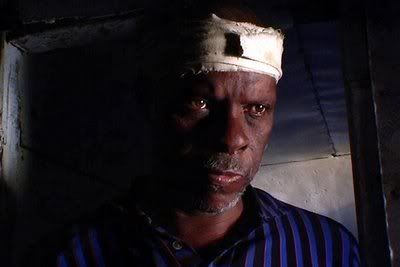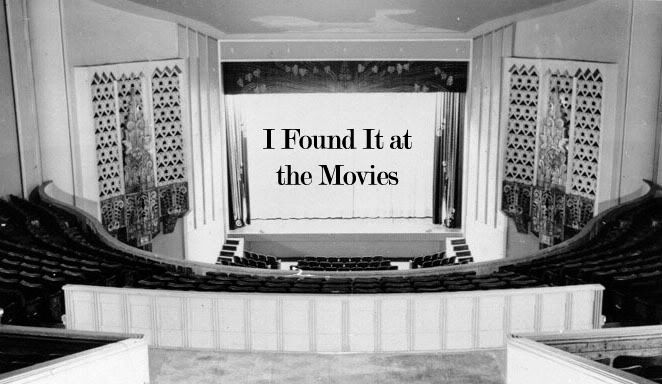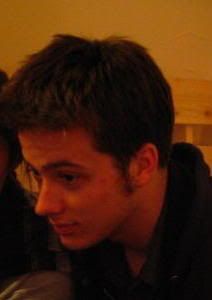
Colossal Youth (Pedro Costa)
Before May 2006, I had never heard of Pedro Costa. Then, when Colossal Youth premiered that month at the Cannes Film Festival (out of which a substantial number of press and public walked), it was as if I could not escape him. He was a rock star. By August of this year, the Portugese filmmaker was the subject of a complete retrospective in New York, which then proceeded to tour the continent, and Colossal Youth was treated to a full New York premiere run. While I regrettably missed his shorts and his only "documentary" feature, I saw all five of his "narrative" features. (The quotes will make sense later in this piece, trust me.) By simple virtue of his current methods, and of the evolution of his body of work, Costa may be the greatest living filmmaker in the world. Even the world’s oldest–fellow countryman Manoel de Oliveira, who turns 100 next year and had THREE films premiere in New York in 2007–seems to think so.
There are people who 99.9% of the American public will never hear of: names like Hou Hsiao-hsien, James Benning, Jean-Pierre & Luc Dardenne, Tsai Ming-liang, Abbas Kiarostami, Bela Tarr, Apichatpong Weerasethakul, Jia Zhang-ke, Hong Sang-soo, etc. Costa certainly falls under this category. But to people like me, he’s massive, a star in his own right, so huge that backlash has already occurred. The irony is not lost on me. Yet, before August 2007, I didn’t have a single opportunity to see any of his first five features or any of his shorts. (Colossal Youth played twice in February as part of Film Comment Selects, after being controversially rejected from the 2006 New York Film Festival.) None of his work is on DVD in the US. I guess he’s just my kind of rock star.
Costa, by his own admission, is in love with classical American cinema. The Blood (1989) evokes Nicholas Ray and Charles Laughton. Casa de Lava (1994) reminds one of Jacques Tourneur and Fritz Lang. Bones (1997) is more Bresson than anyone American, but Costa insists that In Vanda’s Room (2000) and Colossal Youth are John Ford remakes (albeit highly radical ones). These connections sell his other achievements short, however.
In Colossal Youth, the Lisbon we see is one familiar to the viewers of Bones and In Vanda’s Room: the Cape Verde immigrant-populated district of Fontainhas. In Vanda, we watched the tenements being demolished. In Colossal Youth, there are new housing developments, and piles of rubble everywhere. It is another universe, a wasteland that seems born from molten lava. It is a film that looks and feels like nothing I have ever seen before in my life. (A note on its production: Costa shot 320 hours of footage, all on location in Fontainhas, on consumer digital video cameras over a 15-month period. He spent roughly a year editing that footage down to a 2 ½-hour movie. His crew rarely eclipsed the size of himself and 1-2 other people. He used only available light, with reflectors. He also only used direct sound. His cast was comprised of residents of Fontainhas, many of whom he has known for years.)
Narratively, it is a rather sparse affair. A man named Ventura, a former construction worker and witness to the Portugese revolution from decades earlier, is thrown out of his house by his wife. (Or is she his wife?) He then searches for a new home to live with his "children." It is not clear whether or not Ventura has any biological children, but he seems to be a spiritual father to various Fontainhas inhabitants, among whom is Vanda, who is now a mother and heroin-free.
Costa never presents a clean linear narrative; rather, we inhabit a picaresque dream, where time jumps back by a mere change of wardrobe. Vibrant contrasts of ethereal colors punctuate long, static takes of people telling many, many stories. All the actors are playing a version of their actual selves, but compared to In Vanda’s Room–which Thom Andersen astutely observed tore down the wall between fiction and documentary, between filmmaker and subject–Colossal Youth is an even darker, stranger work, the other side of the coin to Syndromes and a Century. Where Syndromes evokes the delicacy of memory and the breakdown of time and space in a lyrical, tender way, Colossal Youth does similar things, but by taking the very elements of reality and turning them on their heads. It surrealizes documentary in a way even Bunuel and Rouch could not have imagined, and grounds narrative into a tactile space the way Tarkovsky and Tarr used to do.
Few shots ever move. Almost all shots are done from low angles. Andersen has described Costa’s methods as creating a Hollywood epic in which the stars are the character actors. Tag Gallagher has said that the film applies mythical epic form to those of the most abject poverty, the ennobling of the poor that many others have mentioned. These all do disservice to the new universe Costa has created, however. He has given us a new way of looking at the world, a way of seeing beauty in abjection, hulking madness in a timeless universe, people being accepted entirely on their own terms without power being placed upon them by outside forces. Ventura, Vanda, Ventura’s friend Lento, and many others are creating their own community, one in order to make the outside universe cohere.


2 comments:
cialis v s viagra viagra lawyer columbus buy cheap viagra online which is better cialis or viagra cheapest viagra in uk sublingual viagra which is better cialis or viagra viagra larger forever viagra free pills herbal viagra reviews negative effects of viagra purchase viagra viagra price comparison viagra no prescription
wow nice article ,Excellent page...I appreciate this blog....
wow nice article
really a wonderful blog... mad house
Bathmate
Post a Comment